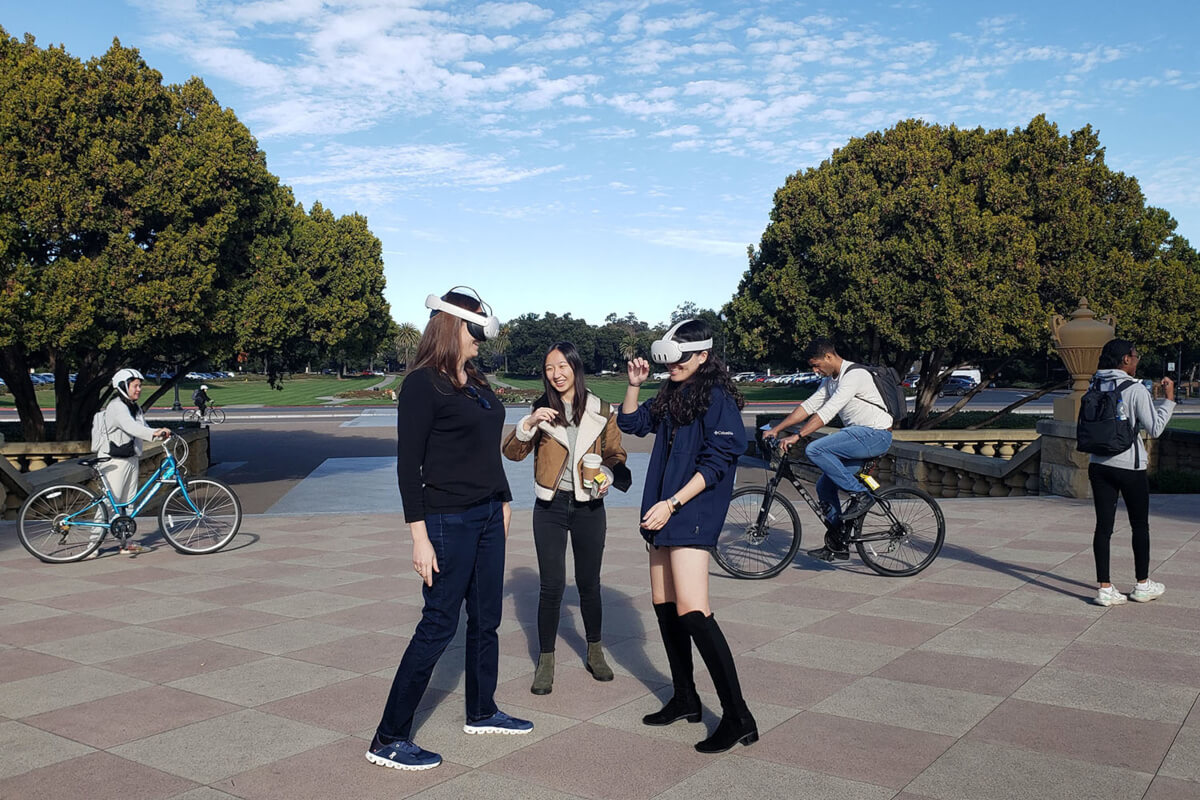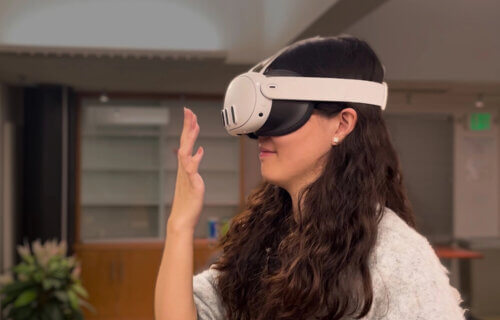STANFORD, Calif. — Mixed reality headsets are becoming all the rage. These cutting-edge devices, which overlay digital content onto the real world through passthrough video technology, could revolutionize our daily lives, yet they come with a set of challenges that might hinder widespread adoption for continuous use. Stanford University researchers have uncovered unsettling effects while studying these headsets, including “dangerous” aftereffects.
Mixed reality, also known as spatial computing, is among the most talked-about consumer technologies today. It promises an immersive experience that combines the physical environment with digital enhancements, allowing users to interact with both realms simultaneously. The technology relies heavily on passthrough video, which captures the external world through cameras mounted on the headset, projecting it onto internal screens in real time. This innovation enables wearers to engage with digital applications while navigating their physical surroundings, a concept that has piqued the interest of tech enthusiasts and companies alike.
A team from Stanford conducted field tests to investigate the psychological and behavioral impacts of prolonged passthrough video headset use. Their findings highlight a mix of experiences that could shape the future of human-computer interaction.
“Given how far headsets with passthrough video have come, it’s time to dedicate serious academic thought to the psychological and behavioral effects of this technology,” says study author Jeremy Bailenson, the Thomas More Storke Professor in the Stanford School of Humanities and Sciences and founding director of the Virtual Human Interaction Lab (VHIL), in a university release. “We want to understand the implications of living in a life in which we rely on passthrough for hours every day to see the world around us.”

Participants engaged in various activities, from walking around campus to buying coffee, all under the watchful eyes of a chaperone to ensure safety. Despite the initial thrill, researchers quickly encountered drawbacks, including visual distortions, feelings of social disconnection, and motion sickness, which raised concerns about the technology’s practicality for extended daily use.
Mixed Reality Headsets Can Cause ‘Funhouse Mirror’ Effect
The study detailed how passthrough video could alter perception, limiting peripheral vision and presenting a “funhouse mirror” effect that distorts reality. Users reported difficulties with simple tasks like giving high fives or eating, as the technology’s limitations led to misjudgments in distance and object size.
“Even though the world you are looking at is real, it certainly has a video-game-like ‘otherness’ to it,” notes study co-author James Brown, a master’s student in Stanford’s Symbolic Systems Program.
These visual inaccuracies, combined with a delay in the video feed, not only challenged users’ interactions with the environment but also sparked a phenomenon the researchers termed “social absence.” This sense of disconnection from people in the immediate vicinity, as if they were mere images on a screen, underscores the potential social ramifications of widespread headset adoption.
Furthermore, the team highlighted the risk of simulator sickness, akin to motion sickness, which could deter users from prolonged engagement with the technology.
“I was surprised because all 11 of us in this study are headset veterans, but even from relatively short periods of use, we tended to feel uncomfortable,” explains Bailenson.
Given these findings, the Stanford team advises mixed reality users to approach the technology with caution. Bailenson recommends moderation in use, suggesting breaks and shorter sessions to mitigate the adverse effects and potential dangers associated with the headsets.
“There is great potential for passthrough video headsets across all kinds of applications,” concludes Bailenson. “But there are pitfalls as well that can lessen the user experience, from feelings of social absence to motion sickness, and aftereffects that could possibly even be dangerous.”
The study is published in the journal Technology, Mind, and Behavior.

Back in the 70’s it was ‘ Reality is for people who cant handle drugs ‘ ….
There is No constructive reason for this stupidity to invade the lives of people who do not want it to . I will NOT yield to someone in a public place with this on their face .
Well, depending on the situation, the law would require you to do so. If someone is walking in a cross walk with these on and they have the right of way, then you would be the complete a hole. if you didn’t give them the right of way. Just saying.
I would love a set of these, but I wouldn’t use them to drive a car, that’s for sure. Nor would I walk about in public places. I could maybe use them on a vacation in certain spots to make a spatial video at most.
You sound nice.
Nobody is asking you to yield. What on earth are you talking about? It’s much more of a problem that everyone is walking around looking at their phones instead of where they’re going and that’s a real problem, not one of your fevered imagination.
Boonie u are so mis informed it is HYSTERICAL. go get a job boomer your social security checks are going to run out. Better yet, go get a headset so you can start earning cash in the new digitial age LOL!!!!
It is called spatial disorientation. While the latest headset device may offer the user a far richer 3D experience than what was possible before, it may still not yet be ready for prime time for many who may be adversely susceptible to the alterations of reality. The human brain can easily tell what is real and what isn’t due to a myriad of different signals that it processes, and any VR set that superimposes what amounts to a holographic field of vision can distort that experience, potentially resulting in grand mal seizures or even worse.
This is the stupidest test and paper ever, since this is not at all how current day mixed reality devices are used or designed to be used. Tests only make sense if they test the way something is actually used, otherwise is it just complete house**** done for clicks and attention from the general public that never touched a VR or AR device in their lives, but meaningless to anyone with even an ouch of knowledge about these devices. These researchers should be fired for wasting money and misleading the public.
it isn’t the aftereffect that i would worry about IF i decided to put one of things on. i would worry that everybody would think i was super geek while i was wearing it!
I don’t want or need a clunky pair of VR goggles in order to live my life. Everyday reality is enough for me. Trying to escape from real life seems to cause many problems in society. Just facing and dealing with the world as it actually is seems to be the best approach,
Well, isn’t that spatial.
Engineers can now spot lazy workers
slacking off thus preventing planes
falling apart in the air.
this device will grow in importance
in space travel…now an astronaut
can have multiple monitors beside
the dedicate one in front of him/her.
3 and 4 star Generals will now have
real time interaction with ground and
high ground troops, directing their movements
much like Alexander the Great did with his army.
Doctors and Nurse Practitioners will
have a field day with this device
in helping patients recover or used
in their examinations.
I see many wonderful uses for this
device besides sitting on a couch
all day eating chips and slurping soda
and playing their life away.
There is nothing new under the sun and we are back to chains in Plato’s cave staring at shadow’s on the wall.